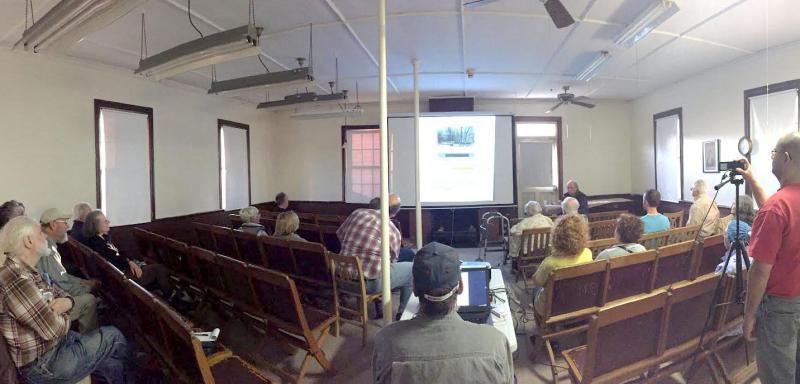Dartmouth Historical & Arts Society locates 8 animal pounds in Old Dartmouth
“I’m basically a nosy character,” said Robert Harding, president of Dartmouth Historical & Arts Society.
That trait fed his research into animal pounds in Old Dartmouth. On Sunday, he presented his findings to the 24 society members gathered at the 1871 Schoolhouse on Russells Mills Road. Via maps, deeds, and other historical documents, Harding was able to locate where eight animal pounds once stood, including the last surviving one at 1150 Russells Mills Road.
“Early animal pounds originally were for cattle, but today, they’re for stray dogs or abandoned cars,” said Harding to start his slideshow. The use of animal pounds, he said, was brought over from England and enacted in the Massachusetts Bay Colony in 1630.
Agriculture was the way of life, so to protect crops and other properties, field drivers would lead stray livestock—including cows, pigs, horses, and sheep—to an animal pound, where the owner then had to not only pay to release it, but also pay off any damages it had caused, said Harding.
Early laws dictated how to identify animals—either with earmarks or branding—and how sturdy fencing had to be. The position of fenceviewer was designated to reviewing enclosures. If livestock damaged your property because your fence wasn’t strong enough to keep it out, then it was your fault, cited Harding. The earliest animal pounds were made of wood; later pounds, like the 50x50 square foot Russells Mills pound, were stone walling.
“I grew up in Russells Mills and always heard about the pounds. I didn’t realize it was the last one,” said DHAS member Cindy Tardif, explaining her attendance to the 6:30 p.m. lecture.
Following the 60-minute presentation, Harding provided a question-and-answer session, in which he encouraged his peers to do their own research for questions he couldn’t answer.
“It’s like a jigsaw puzzle,” he said. “People here give you clues and I would follow up on them. I work hard for this.” As an example, Harding identified a pound at Weld and Purchase streets through an 1835 New Bedford directory.
“He kind of gives you a travel tour around the area,” said attendee George Wilkie about the historical maps. “If you drive around this area, it all clicks.”
Old Dartmouth included present-day Dartmouth, New Bedford, Acushnet, Westport, and Fairhaven, said Harding.
The Historical & Arts Society meets at the 1871 Schoolhouse located at 1205 Russells Mills Road. The next presentation will be about Dartmouth’s cemeteries, and is scheduled for June 5 at 6:30 p.m.















